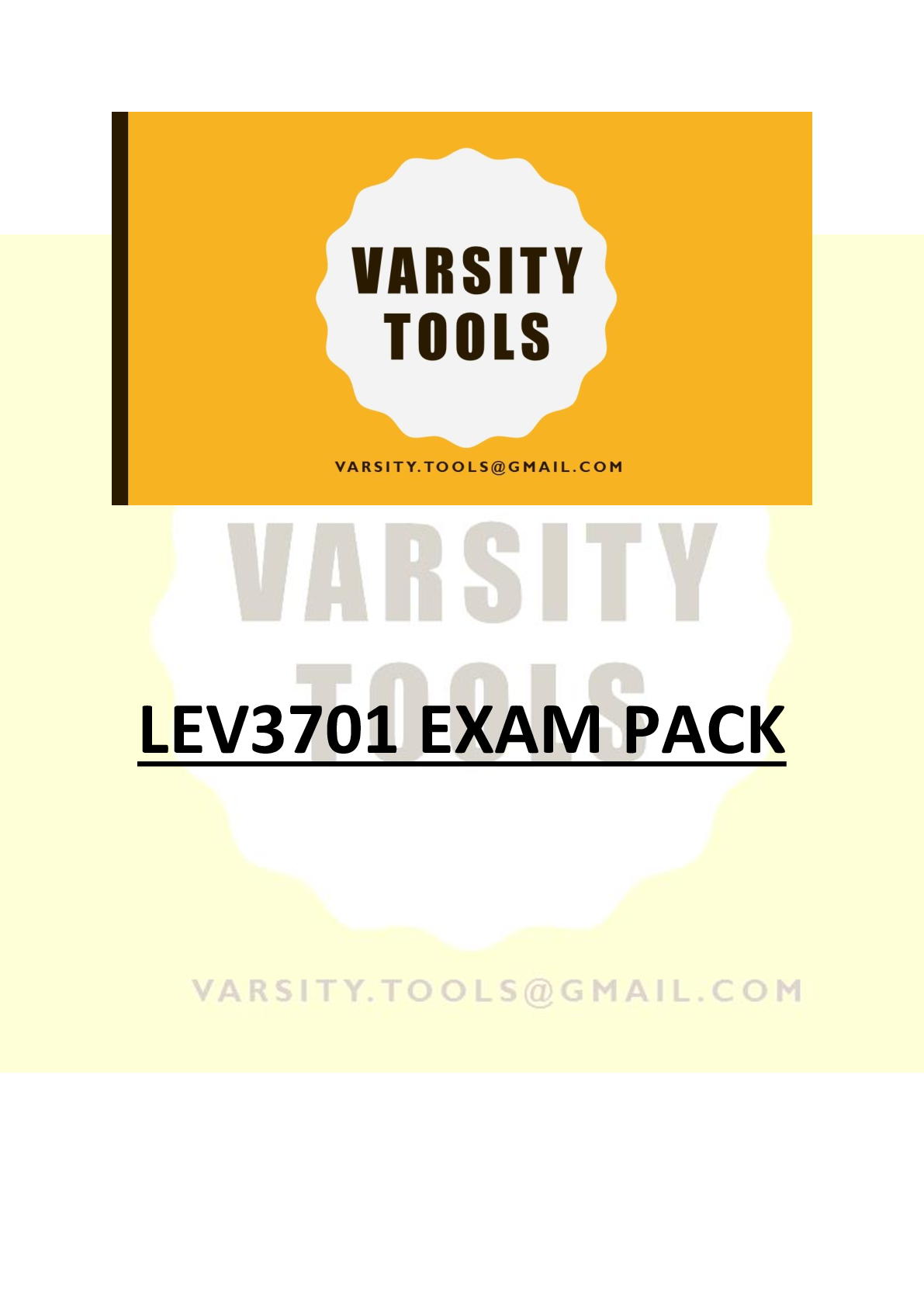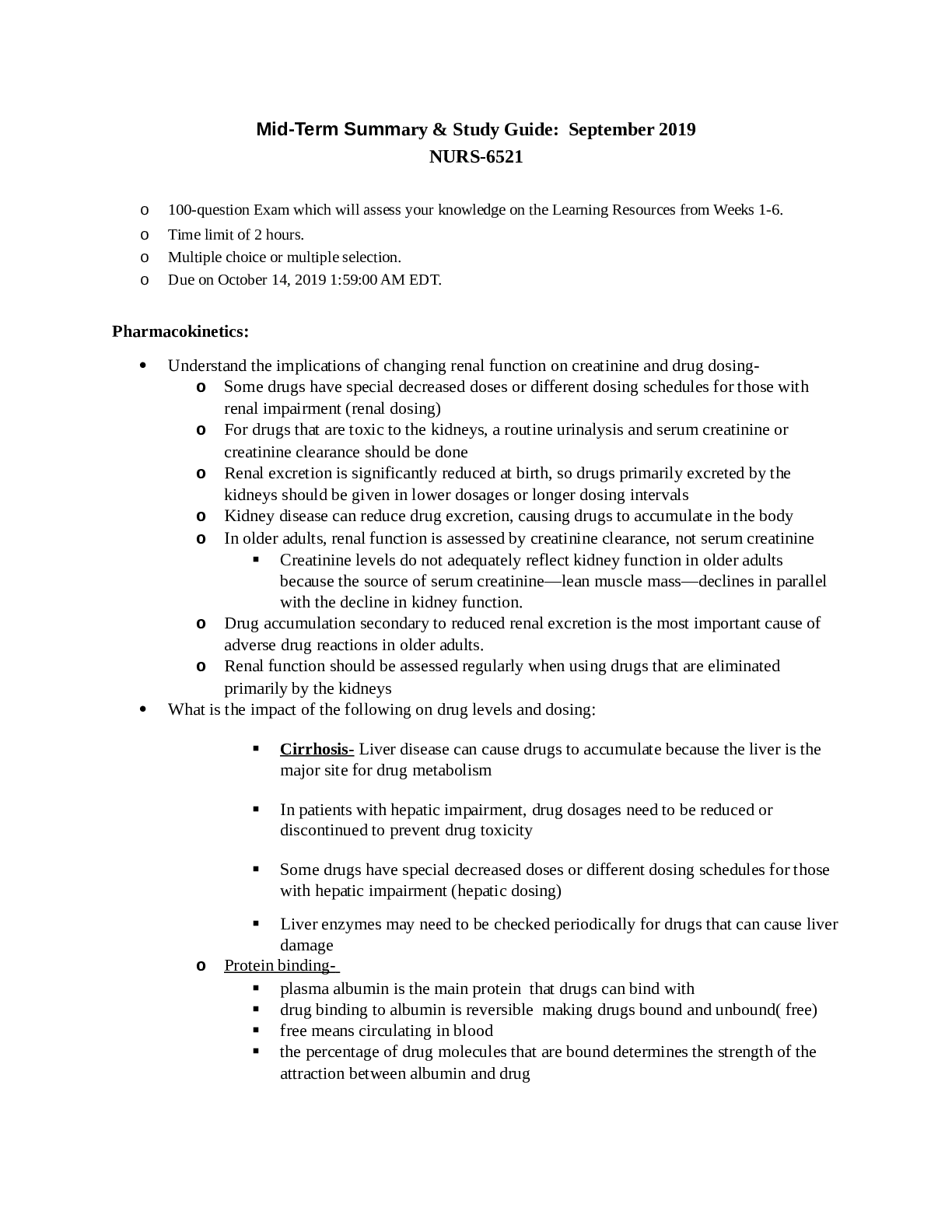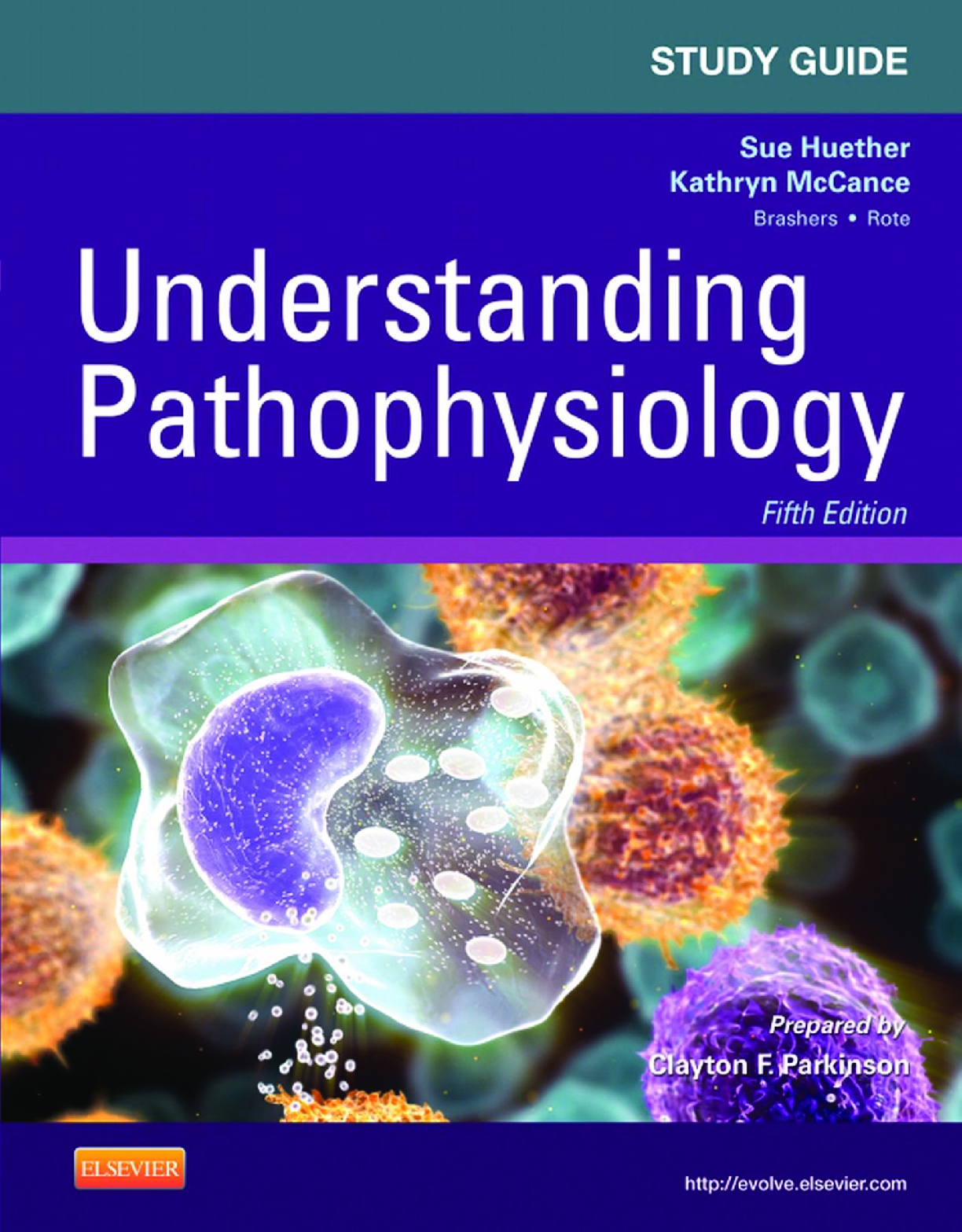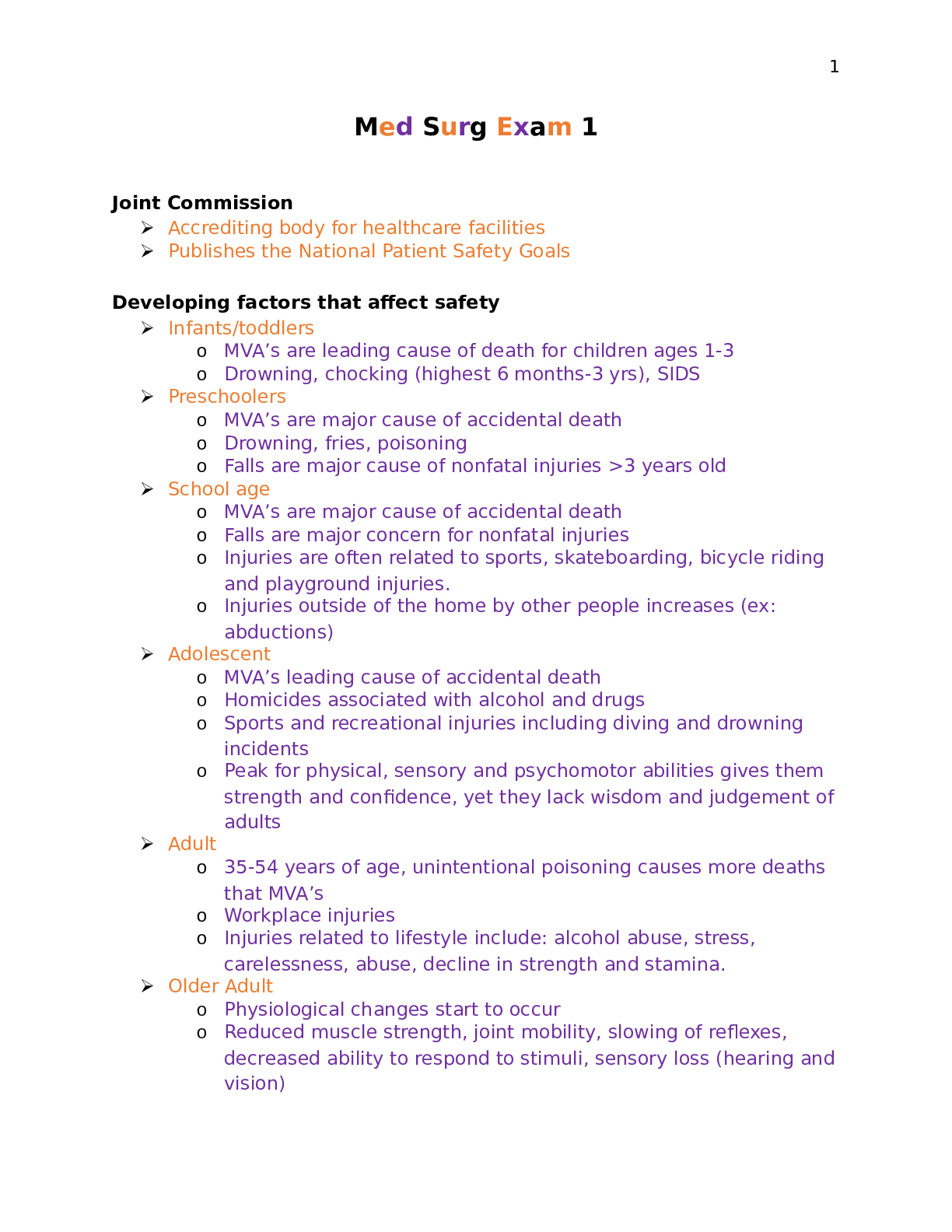*NURSING > STUDY GUIDE > Review of Knowledge (ROK): Pharmacology NR 291/NR 293 Exam 1: Week 3 (Chapters on Exam 1 are: 2, 38, (All)
Review of Knowledge (ROK): Pharmacology NR 291/NR 293 Exam 1: Week 3 (Chapters on Exam 1 are: 2, 38, 39, 40, 42, 10, 12, 14, 16, & 44)
Document Content and Description Below
Review of Knowledge (ROK): Pharmacology NR291 Course NR293 Exam Exam 1: Week 3 (Chapters on Exam 1 are: 2, 38, 39, 40, 42, 10, 12, 14, 16, & 44) Purpose The Review of Knowledge (ROK) focuses on co... urse outcomes, unit outcomes and key concepts to enhance student success on exams. Use this document as a focused guide for study in conjunction with assigned readings, PowerPoint presentations, and other course resources. Supplement this document by outlining your own notes from the textbook chapters and place your expanded more detailed notes in the Student Notes column. This document should NOT be used as a substitute for completing the assigned readings. Key Concepts Chapters Student Notes Pharmacologic Principles Chapter 2 Identify the 4 phases of pharmacokinetics, and explain briefly what occurs in each phase. 1. Absorption (p. 22-25) 2. Distribution (p.26) 3. Metabolism (p.27) 4. Excretion (p. 27-28) The half-life of a drug is the time required for one-half (50%) of a given drug to be removed from the body. It is a measure of the rate at which the drug is eliminated from the body. For instance, if the peak level of a particular drug is 100 mg/L & the measured drug level is 50 mg/L in 8 hours, then the estimated half-life of that drug is 8 hours. (Lilley, Collins, & Snyder, 2014, p. 28) Fill in the boxes: Half- life is 3 hours 3 hours 6 hours 9 hours 12 hours Drug X dose 200 mg 100 50 25 12.5 Drug X dose 500 mg 250 125 62.5 31.25 Route of Administration: The parenteral route is the fastest route by which a drug can be absorbed, followed by the enteral and topical routes. Parenteral is a general term meaning any route of administration other than the GI tract. It most commonly refers to injection. Intravenous injection delivers the drug directly into the circulation, where it is distributed with the blood throughout the body. Drugs given by intramuscular injection and subcutaneous injection are absorbed more slowly than those given intravenously. ROUTE Examples of Formulations Enteral Tablets, capsules, oral soluble wafers, pills, timed-release capsules, timed-release tablets, elixirs, suspensions, syrups, emulsions, solutions, lozenges or troches, rectal suppositories, sublingual or buccal tablets Parente ral Injectable forms, solutions, suspensions, emulsions, powders for reconstitution Topical Aerosols, ointments, creams, pastes, powders, solutions, foams, gels, transdermal patches, inhalers, rectal and vaginal suppositories Why can’t extended release or enteric coated oral medications be crushed? “could cause accelerated release of drug from the dosage form and possible toxicity” (Lilley et al., p. 21) How can you help a client who has swallowing difficulties take their oral medication? “The ability to crush a tablet or open a capsule can facilitate drug administration when patients are unable or unwilling to swallow a tablet or capsule and also when medications need to be given through an enteral feeding tube. Capsules, powder, or liquid contents can often be added to soft foods such as applesauce or pudding, or dissolved in a beverage. Granules contained in capsules are usually for extended drug release and normally should not be crushed or chewed by the patient. However, they can often be swallowed when sprinkled on one of the soft foods. Consultation with a pharmacist, reading the product literature, or use of other suitable source is necessary if any question exists as to whether a drug can be crushed or mixed with specific food or beverages”. (Lilley, et al. pg 21) First Pass Effect: “A drug that is absorbed from the intestine must first pass through the liver before it reaches the systemic circulation. If a large proportion of a drug is chemically changed into inactive metabolites in the liver, then a much smaller amount of drug will pass into the circulation (i.e., will be bioavailable). Such a drug is said to have a high first-pass effect (e.g., oral nitrates)” (Lilly p. 22). First-Pass Routes: List routes that would be considered first-pass. 1. SEE BOX 2-2, PAGE 25 2. 3. 4. Non–First-Pass Routes: List routes that would be considered first-pass. [Show More]
Last updated: 2 years ago
Preview 1 out of 17 pages
.png)
Buy this document to get the full access instantly
Instant Download Access after purchase
Buy NowInstant download
We Accept:

Reviews( 0 )
$13.50
Can't find what you want? Try our AI powered Search
Document information
Connected school, study & course
About the document
Uploaded On
Jun 16, 2021
Number of pages
17
Written in
Additional information
This document has been written for:
Uploaded
Jun 16, 2021
Downloads
0
Views
80


 Introduction & History of Microbiology Professor Md.png)







